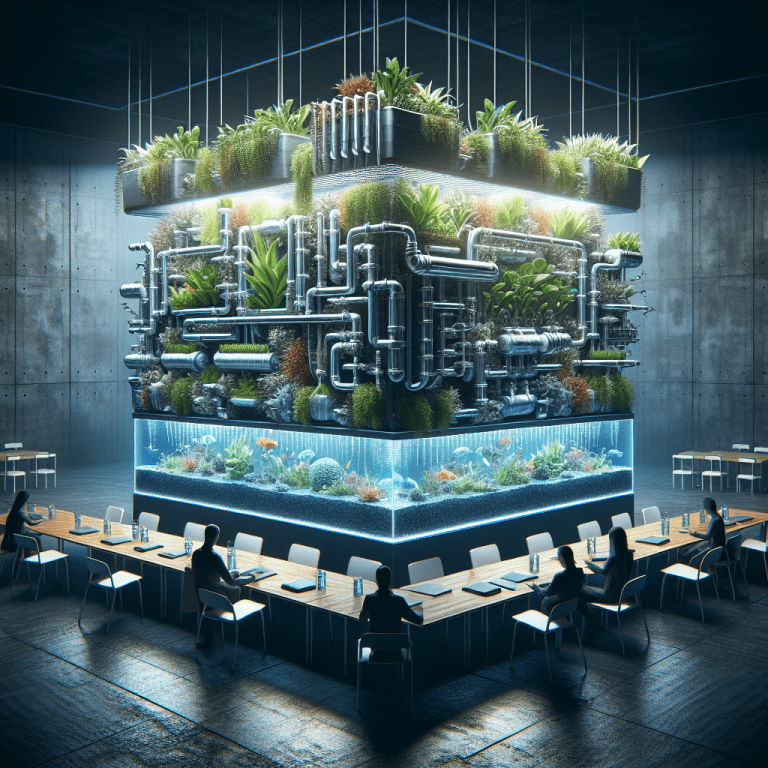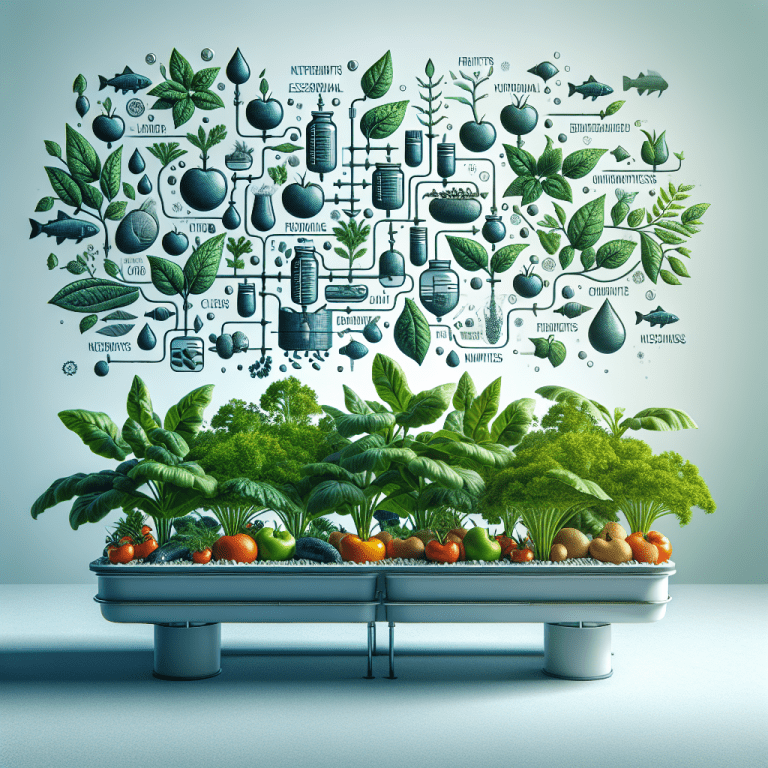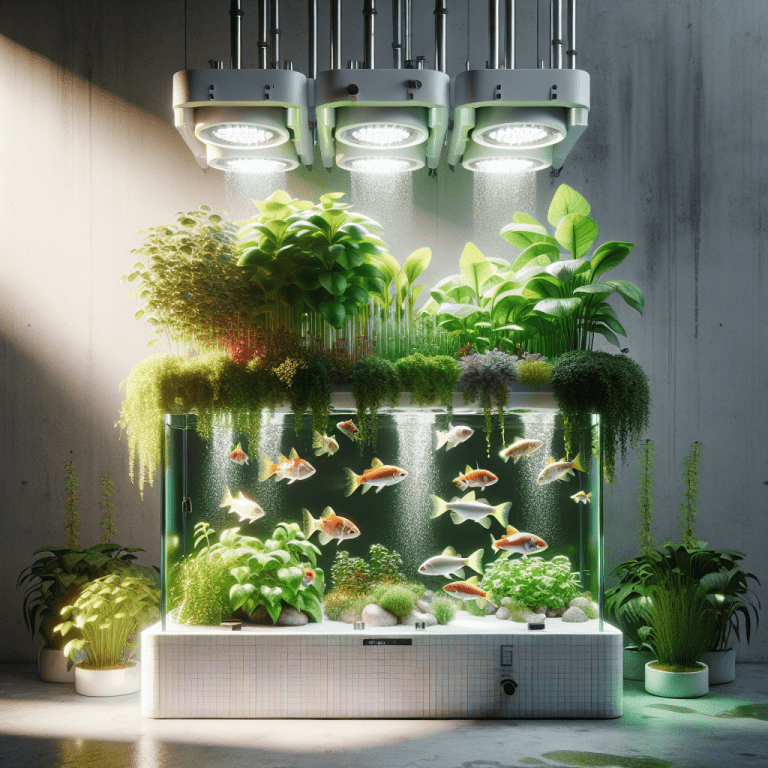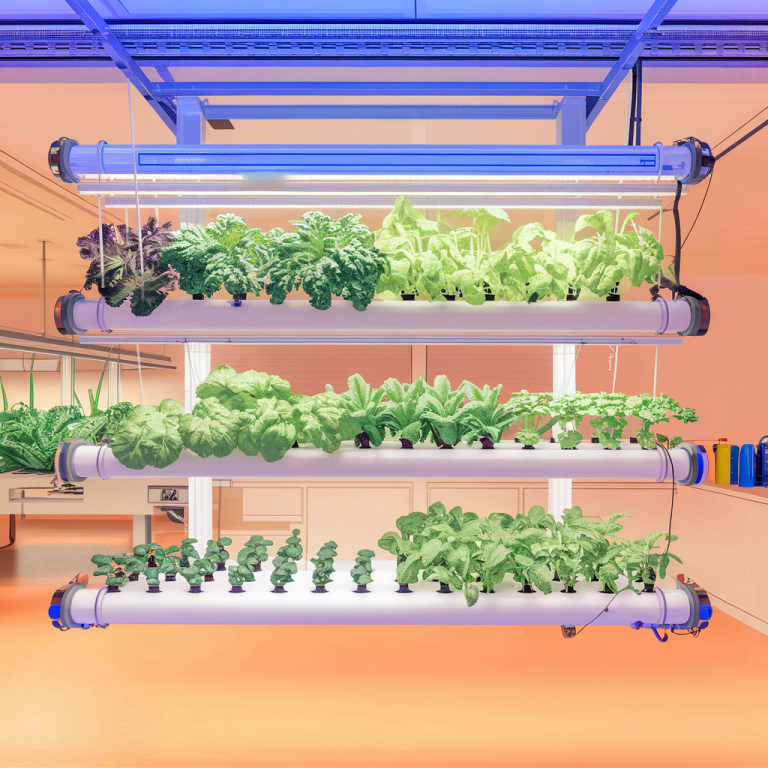Welcome, brave explorers of the aquaponic new world! It's no secret that the climate of our fragile planet is changing, urging us to find innovative ways to feed ourselves sustainably. Enter: Small Space Aquaponics—the dynamic, compact solution catering to the trends of our urban jungles. Got lofty dreams of growing your thyme and tilapia simultaneously? We hear ya! Embarking on the Small Space Aquaponics journey can feel like you're a guppy swimming in the vast, oceans of expert jargon—intimidating, right? Not anymore. Think of this case study as your personal submarine, charting a course through real-life sagas of triumph and trial in the small space aquatic ecosystem. We've cast our net wide, ransacking the seas of insight to share some enlightening experiences. No lore here, just plain-ol' truths backed by data! We'll spotlight backyard heroes who turned challenges into schools of success—with flair and innovation, of course. Count on us, to dig into the nuts and bolts, and maybe even uncover a hidden treasure or two! Like an all-knowing octopus, we'll juggle multiple topics—tackling potential pitfalls, pinpointing effective strategies, gauging the impacts, and gathering pearls of wisdom that can make your venture as smooth as a dolphin's dive. Ready to bubble up with new inspiration? We sure are! Lean in, aqua-friends. It's time to dive into the deep end of Small Space Aquaponics! Let's see where the current leads us, shall we?
Uncovering the Potential of Small Space Aquaponics
Pushing open the doors to a creative solution, let's dive into practicality swimming with fish… and plants. Yes, we’re hilariously serious! Ever thought about transforming a small, unused corner of your home into an intuitive green space that also breeds your favorite aquatic species? Well, welcome to the world of small space aquaponics, the wonderland where the plant kingdom fuses with the aquatic, offering a combo that cheers for sustainability. We understand the hesitation: limited space, minimal expertise, keeping two living ecosystems balanced—seems like a tightrope walk, right? But from a spacious balcony to the cramped up garage, aquaponics proves surprisingly elastic. Tight budget? Not a problem either. With some DIY skills, you could adapt various offbeat choices—an old bathtub, fishbowls, even plastic containers—as your new eco-tanks. Remember that mind-blowing experiment in high school biology about green plants synthesizing their food under sunlight? Ladies and gentlemen, small space aquaponics merely extends it one step further with a symbiotic circle. Fish waste, toxic for our gilled fellows, comes around as a blessing for the green leaves—they gobble up these nutrients. Meanwhile, the plants purify the water, setting up a sustainable, toxin-free swim zone! So, weeds saying 'hi'? Say 'bye', because this process minimizes them big time! Now, isn't that a brilliant example of give-and-take in our tiny patch of biodiversity? By espousing creativity, you’d also pitch an environmental-friendly tent. Are you ready to ride the green wave and unlock the potential of small space aquaponics? Dive right in—challenge, creativity, innovation…and those quirky tomatoes peeping from between the leaves, all await you!
Navigating Challenges in Small Space Aquaponics Systems
Diving headfirst into small space aquaponics can be like tackling an unmarked puzzle—one with a legion of pieces no one quite warned you about. Yet, just as finishing a puzzle delivers profound satisfaction, establishing a thriving aquaponics system, even in a tight space, brings not only a sense of accomplishment but serves as a key to healthier living. Let's shine a spotlight on the classic challenges that make up this adventure. Firstly, picture our friend Clara, a city dweller who transformed her dank basement into a green paradise of herbs using small space aquaponics. Clara's first hurdle was mocking her tiny space. She initially felt overwhelmed by the constraint but soon identified vertical farming as her magic wand. This method creatively facilitates plant growth upwards, saving crucial floor space. See, for venturing into aquaponics, you don't always need a big backyard; just some innovation and resilience. Yes, light might turn out to be a nagging issue, but Clara’s solution—grow lights—cast away the gloom in her basement, fulfilling her plants' chlorophyll dreams. Then we have the technical part—the balance of plants and fish in the same system! Or like inviting vegans and carnivores to a harmonious dinner party. Here, equipment like water pumps and testers hints at a little technical flair, but remember, Google is your quick-fix genie. Clara's problem was not knowing how to maintain optimal water pH; after hours of scrolling through forums, she ran into a cheap, portable tester tool. Small space aquaponics isn't about having a leafy yard or a Doctorate in Biotech. It's about rolling up your sleeves, acting on curiosity, and leaping into innovation for health and wellness. Clara's next move? Encouraging friends to test the aquaponics waters. So, why not give this sustainable chaining of fish and plants a go? You might just open a door to freshness in your own home, thriving despite the odds, just like Clara did.
Innovative Strategies for Success in Small Space Aquaponics
Continuing our exploration, let's chat about Adam's story as it offers fascinating insights into mastering small space aquaponics. Remember – it's not your fancy equipment that defines success in aquaponics; it's ingenuity and resourcefulness. Adam, a student in an urban university setting, had the hunger to incorporate more leafy greens into his bean and rice-filled diet. He lived in a small studio apartment, adopted a betta fish named Barry, and liked to tinker – the small-space aquaponics setup fell perfectly into his lap like a well-tossed salad. Understanding that his lack of space was a major hurdle, he cut corners (literally) and invested in a vertical garden—a stacked planter arrangement alongside his fish tank, with the two interconnected. Just as cheese melds with pastry in a hot oven to create Instagram-worthy cheese gougeres, Adam's innovative approach combined the fish waste as food for his plants while the plants purified the water for Barry-the-betta. Resulting in culinary herbs growing on each block layer combined with the fish tank below, resembling a green waterfall reminiscent of the Hanging Gardens. Seeing weekly selfies of Adam's flourishing lettuce and vibrant spinach, friends felt inspired—maybe even slightly envious—to dabble in this small space aquaponics setup while learning how to balance nature and nurture. When looking to create something innovative and fitting in tiny areas, why not give reimagining limitations a whirl much like Adam did and observe newfound magic unfold within the comfort of your own walls. Keeping in sight the small footprint, green ethos, and the benefit of fresh, toxin-free produce—the adoption of small space aquaponics technique can convert your urban apartment into a lush food fortress. How’s that for innovative and creative wellness? And with that, we dive into our next strategic element, ready to learn and grow together (quite literally!). It's like turning random leftover fridge ingredients into an unexpected, delectable meal. Let’s adopt the “Adam-style” ingenuity, and you'll find that the concept of small space aquaponics, is in fact, easier than you'd anticipated!
Analyzing the Results of Small Space Aquaponics Implementation
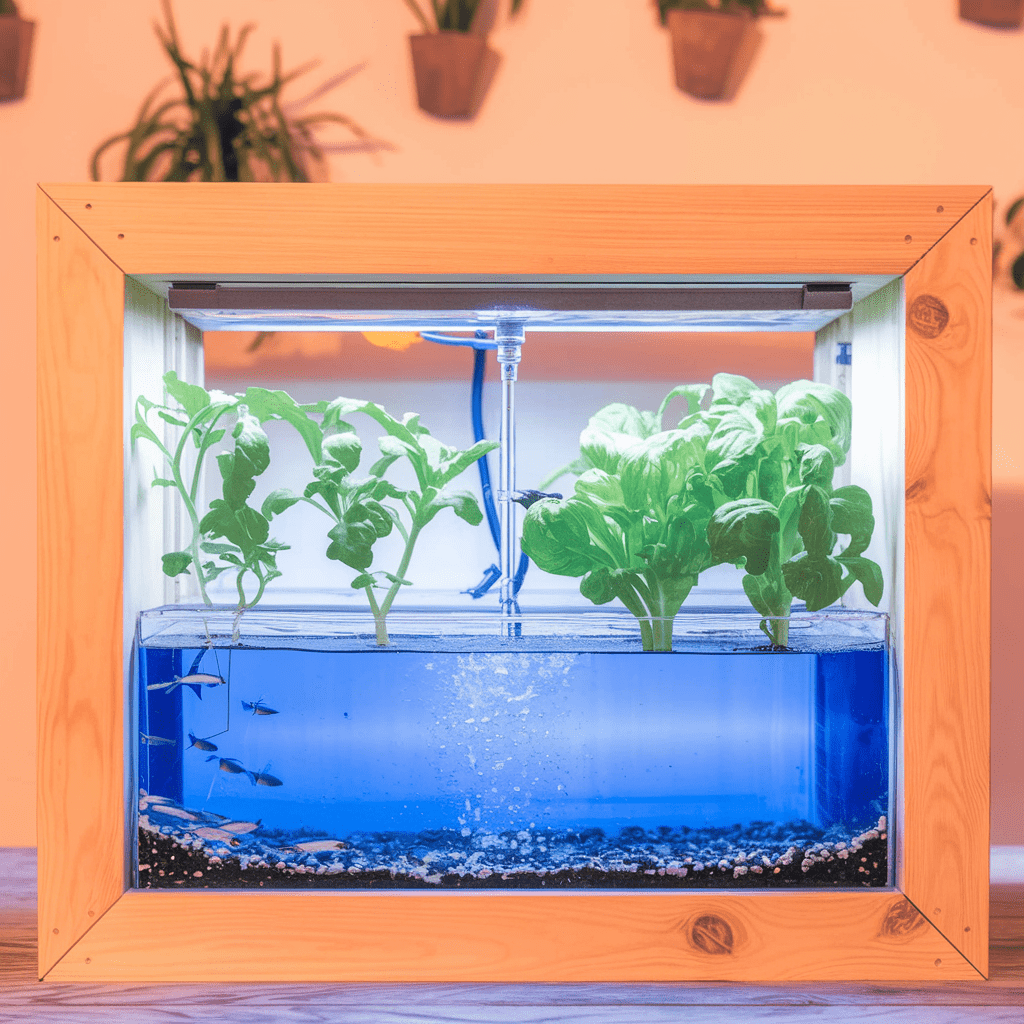
Harnessing the innovation of small space aquaponics was the mission of our case subject: imagine a young apartment dweller eager to adopt a healthy, sustainable lifestyle. With research and a dash of gravel-splashed determination, let's see how she cultivated her health sanctuary. Our subject followed creative and out-of-the-box approaches while implementing her small space aquaponics–from her kitchen counter's miniature tilapia tank to the lush veggie garden draped around her living room wall. Challenges? Yep, there were a few. She grappled with getting the balance of fish to plant ratio just right, grappling with damping-off pathogens in her seedlings(one unfortunate night, she lost her entire pea crop) and calibrating an efficient water flow. But hey, as we learned earlier, small space aquaponics isn’t an excuse for doing things half-heartedly. Through the orchestrated chaos of trial and error, her tiny aquaponics "empire" started to flourish. Imagine munching on peppery arugula that was grown in your living room, raised along with pretty guppies happily paddling around. Delish, right? Not to mention the kick of nutrition in each bite. Her investment of time and effort began yielding enriching results, painting a greener hue to her urban lifestyle. It was like witnessing a tiny "Wonderland" in the confines of her apartment. The best part of our journey with small space aquaponics was seeing her healthy transformations that went far beyond fresh produce. She found a new passion in embarking on this wild ride, managing to blend green lifestyle innovation and her love for aquatic life. More than that, she ignited conversations about sustainability among her peers, inspiring a wave of greener urban living. Moving forward, let's consider her experience as an exemplar of small space aquaponics triumph. Yes, there were obstacles, but the healthy pay-off far outweighed them. Friends, harness your inner green thumbs; the health and wellness benefits of small space aquaponics are yours for the taking!
Key Lessons Learned from Small Space Aquaponics Endeavors
Building on the insights shared earlier, have you ever thought about the limitless power of innovation and creativity in compact settings? Well, that's exactly what our journey into small space aquaponics has revealed. Let's delve into some of the key lessons learned from our endeavor. Firstly, the feasibility of small space aquaponics contradicts the common belief that growing your own food requires acres of land. Think of it more like growing a delicate bonsai tree—you'll achieve the best results with an attention to detail and a genuine appreciation for the process. Placement of your system for optimal light, carefully monitoring water levels, maintaining the delicate balance of nutrient-rich fish waste… sounds a little fussy, doesn't it? But the reward? A self-sustaining, eco-friendly loop that would put Mother Nature herself to shame. Remember Dave from your local coffee shop? Yeah, the barista with a penchant for quirky hobbies. In a 2-bedroom apartment, he managed to cultivate an array of home-grown greens and herbs right at his bay window! The secret ingredient – small space aquaponics. Moreover, the health benefits from this form of agriculture were another eye-opener. Picture this—delectable herbs picked fresh from your mini garden, aiding your body’s wellness, while also providing stress-relief activities. It's like having your cake and eating it… then washing it down with a mint tea made from your own grown mint. In the end, despite initial obstacles, our small space aquaponics endeavor underscored a valuable lesson – innovation and creativity are available for everybody, regardless of space limitations. Gaining insight from Dave, it clearly shows that even the tightest urban dwelling can become a flourishing oasis when tackled with a creative mind. So why not give small space aquaponics a whirl? Success revolves around start, patience, and learning, and who knows? It could end up changing your life – and of course, your dinner plate – for the better!
Conclusion
How are you all feeling? Enlightened and ready to dive into small space aquaponics? Decoding these concepts indeed feels like a new frontier, right? That's the thing about journeys; they're wide and vast, yet a step at a time, and we find ourselves walking a mile in flying colors! We've come a long way together in this case study. Together, we've unraveled the mighty potential of small space aquaponics. The trip was undulating, with stumbling blocks cropping up amidst the attic-sized promise these systems hold. But remember, as we emphasized throughout this exploration, knowledge is the torch that lights up the foggy paths; that weapon we wield against ignorance. We've also embraced innovative paths to turn hiccups into wins in our small space aquaponics endeavors. The results? They're nothing short of inspiring—a solid testament to harnessing a mix of creativity and robust strategies. So, what's next after stepping off the case study coaster? Push past fears, embrace the knowledge, and paint your aquaponics picture—it's time to set your small space aquaponics wonder alive! Remember the key lessons from our real-world try-outs? Keep them in your toolbox; they'll be the blueprint to navigate the aquaponic waters. In a universe flooded with information, it's understandable you may hunger for further insight on related matters. How about hopping onto other case studies to fill that curiosity gap? Lastly, don't shield this wealth of insight. Share it! Who knows who next will bloom in the aquaponics garden simply because you reached out? Go wild, have fun, and remember, in this health and wellness realm—it's all a grand adventure! To quote an old saying, we believe in the “teach a man to fish” approach—help them set up their small scale aquaponic system, we'd say! It's been a trip, hasn't it? Go on then—bring wonders into your small space with aquaponics!
FAQ:
What are some common challenges to anticipate when implementing small space aquaponics systems? Implementing small space aquaponics can oftentimes be met by challenges mainly due to two factors—space and efficiency. As the case study outlines, the limited area often signifies restrictions on the scale of crops and fish you can cultivate. It also requires more precision in setting up an efficient system, where water recirculation must be flawless to ensure healthy species growth and nutrient cycling. Additionally, maintaining perfect pH and nutrient levels in a more compact space might require amplified attention. However, these challenges can be navigated successfully following the suitable strategies covered in our case study. What are some key lessons learned from small space aquaponics practicalities? Based on the comprehensive analysis from the case study, a crucial takeaway in successful small-scale aquaponics systems lies tangible in innovative adaptations. These can include optimized use of vertical spaces, proper selection of thriving plant and fish species matching your setup, and balanced feeding — feeding enough for fish without overloading the system that could lead to excess waste. Second critical point lies in system monitoring – fine tuning parameters like pH levels, temperature, and moderating nutrient cycles often make the difference between the system's productivity versus failure Ultimately, achieving success in small space aquaponic systems is partially art, partially science, and fully a matter of careful planning and daily check-ins.
